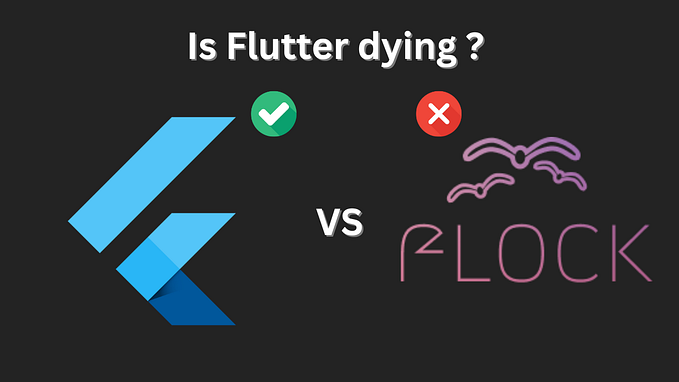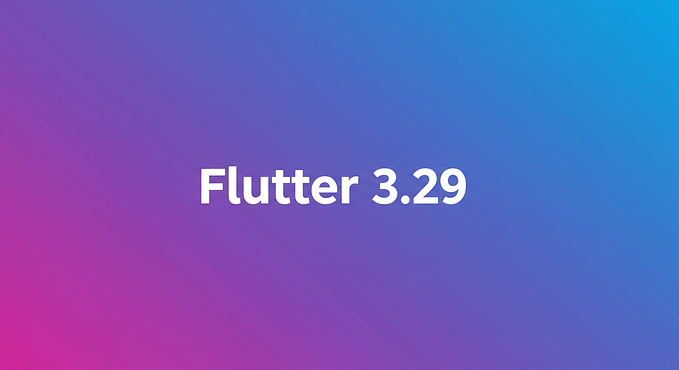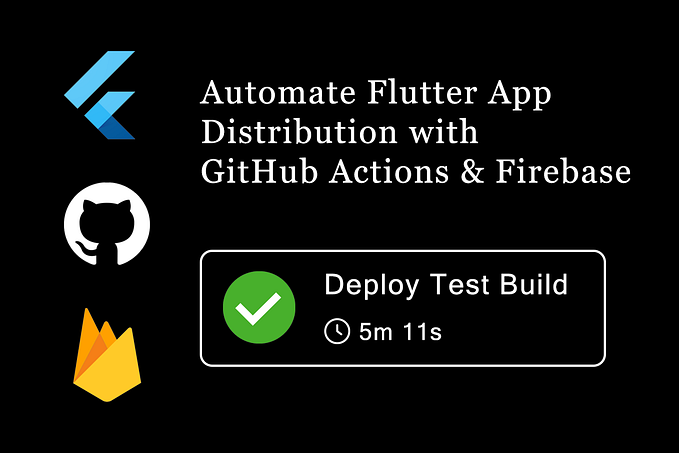FlutterFlow: A Powerful Tool For Creating Stunning Mobile Apps Without Code

FlutterFlow is a no-code application development platform that extends the boundaries of no-code development. It is founded on Google’s Flutter framework, which is widely recognized for its ability to generate natively compiled applications for mobile, web, and desktop platforms from a single source code. By leveraging its capabilities, it offers a robust no-code solution for building high-quality applications, enhanced by an intuitive visual development interface.
This platform empowers users to create, prototype, and deploy applications effortlessly through a drag-and-drop interface. It is a user-friendly option for designers, entrepreneurs, and individuals seeking to create mobile and web applications without the need for coding expertise. With its seamless integration capabilities, real-time collaboration features, and comprehensive testing tools, FlutterFlow stands out as an attractive choice for individuals and businesses seeking to streamline their application development processes.
In the forthcoming exploration of its features and advantages, we will delve into how it maximizes the potential of the Flutter framework to elevate the realm of no-code application development.
Key Features of FlutterFlow

FlutterFlow’s success in redefining the no-code landscape is attributed to a set of remarkable features:
- Drag-and-Drop Interface: It offers a user-friendly drag-and-drop interface that allows you to piece together your app’s layout effortlessly. Whether you’re a designer with a creative vision or a business strategist with an idea, this intuitive interface lets you bring your concepts to life without wrestling with code.
- Integration Capabilities: Seamlessly integrating with a wide array of APIs and third-party services, it empowers you to add functionalities like geolocation, payment processing, or social media sharing to your app. This flexibility broadens the horizons of what your app can achieve.
- Real-Time Collaboration: Collaboration is at the heart of modern app development, and it recognizes this. Its real-time collaboration features enable multiple team members to work together simultaneously, fostering creativity and ensuring everyone stays on the same page.
- Preview and Testing Tools: It understands the importance of quality assurance and provides robust preview and testing tools. Before launching your app, you can test it across various devices and screen sizes, ensuring a seamless user experience.
Within the Flutterflow community, these features are celebrated as catalysts for innovation and efficiency. The platform empowers individuals to bring their ideas to life and serves as a valuable tool for businesses looking to prototype and iterate swiftly.
By harnessing the power of Flutter frameworks, it combines the elegance of Flutter’s native app performance with a no-code approach, paving the way for a new era in app development where creativity knows no boundaries. Whether you’re a seasoned developer or someone new to the world of apps, it welcomes you to embark on a journey of limitless possibilities.
Related Article: Flutter for App Development: Features, Advantages, and Limitations
How FlutterFlow Enhances No-Code Development
Let’s explore how FlutterFlow empowers users to overcome these hurdles and create stunning, feature-rich applications:
1. Eliminating Coding Barriers:
Traditionally, app development demanded proficiency in coding languages. However, it eliminates this requirement, allowing those without coding expertise to build applications quickly. It opens the door for a wider community of flutter app developers who can now turn their creative ideas into functional apps without struggling with code.
2. Complex Animations and Interactions:
Creating intricate animations and interactions involves complex coding. It simplifies this process by offering a visual interface where you can design and implement animations effortlessly, empowering designers and non-developers to craft engaging user experiences that were once the domain of expert Flutter app developers.
3. Custom Functionality with Visual Logic:
One of FlutterFlow’s standout features is its visual logic system, allowing you to define custom functionality for your app using a logic-driven approach. You can create conditional statements, handle user inputs, and build dynamic features without writing a single line of code. This feature bridges the gap between Flutter app developers and those with no coding background.
4. Cross-Platform Development :
It leverages the underlying power of the framework. It is known for its ability to create natively compiled applications for multiple platforms from a single codebase. You can build apps that run seamlessly on iOS, Android, and the web. This cross-platform compatibility eliminates the need for separate development efforts, saving time and resources for flutter app developers.
5. Extending Capabilities with Plugins and Widgets:
It extends its functionality by allowing you to integrate third-party plugins and widgets effortlessly. Without writing custom code, you can enhance your app with features like maps, social media sharing, or e-commerce capabilities. It’s a boon for Flutter app developers looking to quickly add advanced functionality to their applications.
In the ever-evolving world of app development, it is empowering a new generation of app developers and designers to create exceptional, cross-platform applications without the constraints of coding expertise. Its intuitive interface and robust feature set ensure that innovation knows no bounds, making app creation accessible and enjoyable for all.
Benefits of Using FlutterFlow

Embracing FlutterFlow in your Flutter mobile app development services can bring forth many advantages that streamline the development process and enhance the overall quality of your applications. Here are the key benefits:
1. Faster Development Cycles:
It significantly accelerates the pace of app development. With its intuitive drag-and-drop interface and pre-built components, your team can swiftly design, prototype, and develop applications. This agility allows you to bring your ideas to market much quicker, gaining a competitive edge in the fast-paced world of mobile app development.
2. Reduced Development Costs:
Cost efficiency is a critical factor in any Flutter mobile app development project. You can significantly reduce development costs by utilizing FlutterFlow’s no-code approach and eliminating the need for extensive coding and debugging. It mainly benefits startups and small businesses with limited budgets, allowing them to allocate resources more effectively.
3. Empowering Designers and Non-Developers:
It empowers your seasoned developers, designers, and non-technical team members to contribute to the app development process. This democratization of app creation fosters collaboration and innovation within your organization. Designers can bring their creative vision to life, and non-developers can contribute ideas and concepts, ensuring a more holistic approach to app development.
4. Maintaining Code Quality and Performance:
While no-code platforms simplify the development process, they often raise concerns about code quality and performance. It is built on the framework, maintains the high-performance standards associated with native app development, meaning you can create visually stunning and responsive apps while ensuring optimal user experiences. It balances simplicity and robustness, crucial for successful Flutter mobile app development services.
Incorporating it into your Flutter mobile app development services empowers your team to work more efficiently, reduces costs, and encourages collaboration among team members with diverse skill sets. Moreover, it ensures that your applications meet the highest performance and quality standards, ultimately leading to greater user satisfaction and success in the competitive app market.
Challenges and Considerations
As you dive into Flutter and FlutterFlow, you must know specific challenges and considerations that may impact your journey. Consider the following important aspects:
1. Learning Curve for Flutter and FlutterFlow:
While Flutter and FlutterFlow offer powerful app development tools, they come with a learning curve, especially for those new to the framework or platform. Learning to use its widgets and features effectively and mastering the intricacies of its visual interface may take some time. However, investing in learning these tools can yield significant rewards in app development speed and flexibility.
2. Scalability and Complex App Requirements:
While Flutter and FlutterFlow excel in building a wide range of apps, including MVPs and smaller projects, they may face challenges regarding highly complex or large-scale applications. Scaling an app to handle a massive user base or integrating complex backend systems can be more demanding. It’s important to carefully assess your project’s scalability and complexity requirements and seek additional development resources or expertise when needed.
3. Vendor Lock-In and Flexibility Concerns:
Vendor lock-in is a consideration when using any no-code or low-code platform, including FlutterFlow. While these platforms offer convenience and speed, there can be limitations in terms of flexibility. If your app relies heavily on proprietary features or components provided by the forum, it may become challenging to migrate to a different development environment in the future. It’s advisable to balance utilizing the platform’s benefits and ensuring that your app remains adaptable and not overly reliant on specific vendor-specific functionalities.
Navigating these challenges and considerations requires a thoughtful approach to your Flutter and its projects. Investing in learning and staying informed about best practices, scalability options, and long-term flexibility will help you make informed decisions and maximize the potential of these powerful app development tools.
The Relationship Between FlutterFlow and AI
FlutterFlow and AI (Artificial Intelligence) marriage represents a dynamic synergy with immense potential in the ever-evolving app development landscape. Here’s a closer look at the intricate relationship between these two:
- AI Integration: Its flexible architecture seamlessly integrates with AI-powered components and services, meaning that as a flutter development company, you can harness the power of machine learning, natural language processing, computer vision, and other AI capabilities to create intelligent and predictive features within your apps. For instance, you can develop chatbots, recommendation systems, or image recognition functionalities, enhancing user experiences and app functionality.
- Automation: AI-driven automation is a game-changer in app development. It empowers you to automate repetitive tasks, such as data entry, user behavior analysis, and content personalization, through AI. By automating these processes, your flutter development company can focus on more creative and strategic aspects of app creation, ultimately saving time and resources.
- Enhanced User Engagement: AI algorithms can analyze user data to personalize content and suggest relevant features. When integrated with FlutterFlow, this translates to apps that adapt to individual user preferences, delivering a highly engaging and tailored experience. Such personalized experiences are crucial for retaining users and boosting app success.
- Data-Driven Insights: AI can provide valuable insights from user interactions and app usage patterns. With its capabilities, your Flutter development company can easily visualize and act upon these insights to improve app performance, user satisfaction, and business outcomes.
In essence, FlutterFlow and AI form a symbiotic relationship that propels app development into the future. By harnessing the power of AI within the intuitive framework, your flutter development company can create more innovative, efficient, and user-centric applications.
FlutterFlow Pricing
When considering the adoption of it in your flutter development company, understanding the pricing structure is essential. It offers a range of pricing plans catering to different needs:
- Free Plan: FlutterFlow provides a free plan that allows you to explore the platform’s basic features and capabilities. It’s an excellent starting point for small projects or individuals looking to get acquainted with the platform.
- Paid Plans: FlutterFlow offers several paid plans with varying features and pricing tiers. These plans unlock advanced functionalities such as custom domains, team collaboration, and more extensive project capabilities. The pricing is typically based on the scale and complexity of your projects.
- Enterprise Solutions: For larger flutter development companies or organizations with specific requirements, it offers enterprise solutions. These plans are tailored to meet your unique needs, including enhanced security, dedicated support, and custom integrations.
It’s essential to evaluate your Flutter development company’s specific requirements and budget when choosing a pricing plan. Consider the scale of your projects, team size, and the features you need to make an informed decision.
Related Article: Flutter App Development: Cost of Developing a Flutter App
Companies Using FlutterFlow
FlutterFlow has gained popularity among a diverse range of companies and organizations. Some notable companies that have adopted it in their app development processes include startups, enterprises, and digital agencies. These companies leverage its no-code capabilities to streamline app development, reduce costs, and accelerate time-to-market.
As a flutter development company, exploring the success stories of these companies can provide valuable insights into how it can benefit your projects. Whether you’re building a mobile app for a small business or working on a large-scale enterprise application, its versatility and adoption by industry leaders make it a compelling choice for your app development needs.
Comparing FlutterFlow with Other No-Code Platforms
In the rapidly evolving landscape of no-code development, making an informed choice among the available platforms is crucial, especially for a Flutter app development company. Let’s compare FlutterFlow with its competitors, highlighting its strengths, weaknesses, and areas where it truly shines.
Strengths and Weaknesses Compared to Competitors:
Strengths of FlutterFlow:
- Native Performance: Its foundation on Google’s framework gives it a significant edge in native app performance. The compiled code is highly optimized, resulting in fast, responsive apps.
- Flutter Integration: As a Flutter app development company, if you’re already familiar with Flutter, the learning curve for it is minimal. It seamlessly integrates with code, allowing you to leverage your existing skills.
- Rich UI/UX: It offers a wide array of widgets and design elements, enabling you to create visually stunning and interactive user interfaces easily. This richness in UI/UX design is a standout feature.
- Flexibility: The platform’s visual logic system offers a high degree of flexibility in creating custom app functionality without coding, making it suitable for various use cases.
Weaknesses of FlutterFlow:
- Learning Curve: While FlutterFlow’s interface is user-friendly, there can still be a learning curve, especially for those new to app development. Users may need to spend some time learning how to use the platform.
- Complexity for Large Projects: While excellent for smaller and medium-sized projects, it may face challenges when dealing with highly complex or large-scale applications. Ensuring scalability and managing extensive codebases can be more demanding.
Use Cases Where FlutterFlow Excels:
- Prototyping and MVPs: It is ideal for quickly prototyping app ideas or building Minimum Viable Products (MVPs). Its visual interface and pre-built components facilitate rapid development and testing.
- Cross-Platform Development: If your Flutter app development company targets multiple platforms like iOS, Android, and the web, FlutterFlow’s compatibility with Flutter ensures cross-platform consistency and efficiency.
- Design-Centric Projects: Projects prioritizing outstanding UI/UX design benefit significantly from its rich design capabilities and visual logic, enabling designers to take the lead.
- Startups and Small Businesses: For organizations with limited budgets and resources, its cost-effectiveness and quick development cycles make it a valuable choice.
Conclusion
FlutterFlow emerges as a transformative force in app development, offering a no-code platform that empowers users to transcend coding barriers and create high-performance, cross-platform applications. Its rich features, seamless integration with Flutter, and AI capabilities promise efficiency and innovation. However, a learning curve and scalability challenges must be considered. Flexible pricing options accommodate diverse needs, and their adoption by various companies underscores its relevance. It heralds a future where creativity knows no bounds, making it a compelling choice for Flutter app development companies and individuals seeking rapid and intuitive app creation.
Originally published at: https://www.addwebsolution.com/










